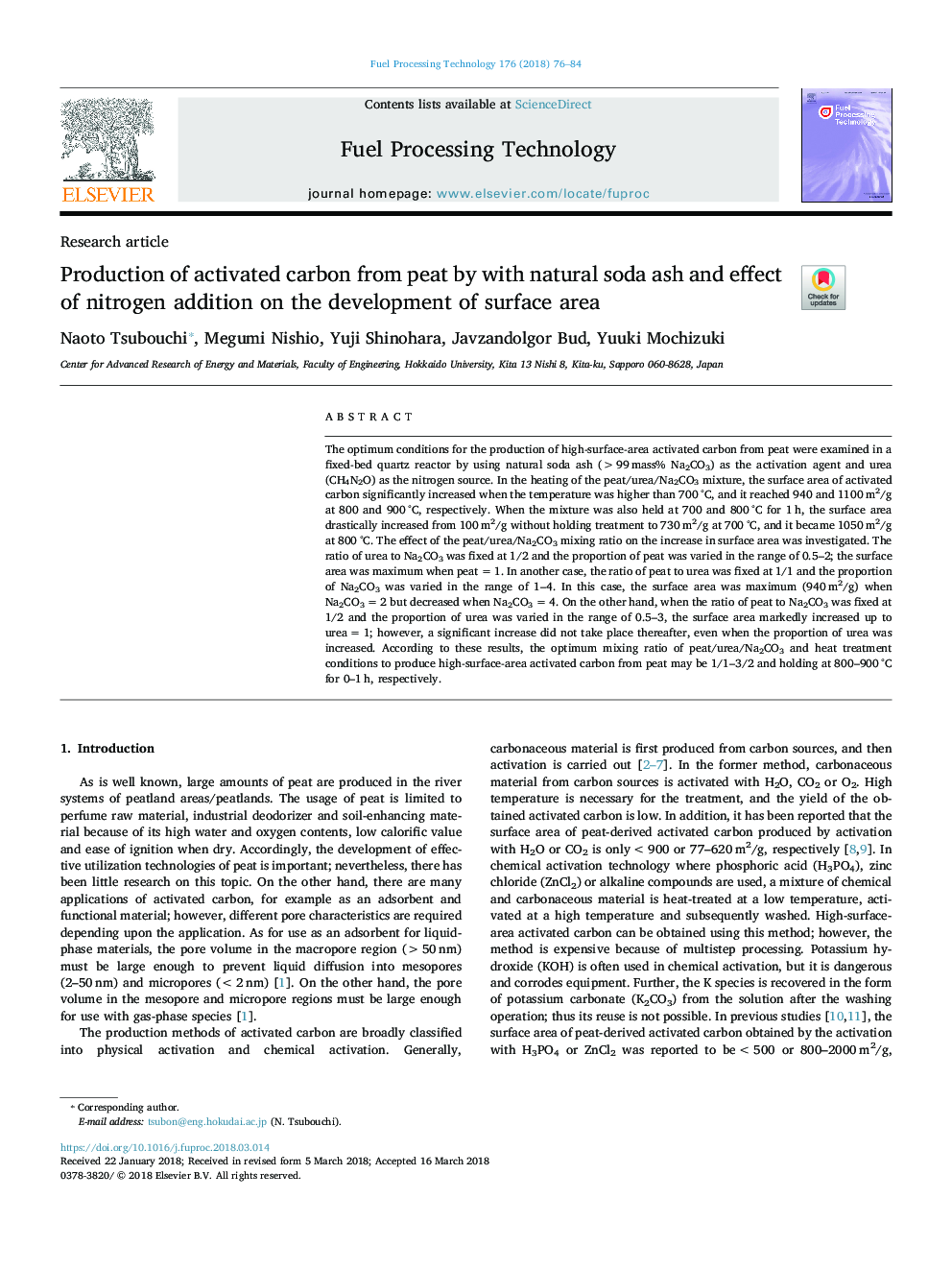| Article ID | Journal | Published Year | Pages | File Type |
|---|---|---|---|---|
| 6656355 | Fuel Processing Technology | 2018 | 9 Pages |
Abstract
The optimum conditions for the production of high-surface-area activated carbon from peat were examined in a fixed-bed quartz reactor by using natural soda ash (>99â¯mass% Na2CO3) as the activation agent and urea (CH4N2O) as the nitrogen source. In the heating of the peat/urea/Na2CO3 mixture, the surface area of activated carbon significantly increased when the temperature was higher than 700â¯Â°C, and it reached 940 and 1100â¯m2/g at 800 and 900â¯Â°C, respectively. When the mixture was also held at 700 and 800â¯Â°C for 1â¯h, the surface area drastically increased from 100â¯m2/g without holding treatment to 730â¯m2/g at 700â¯Â°C, and it became 1050â¯m2/g at 800â¯Â°C. The effect of the peat/urea/Na2CO3 mixing ratio on the increase in surface area was investigated. The ratio of urea to Na2CO3 was fixed at 1/2 and the proportion of peat was varied in the range of 0.5-2; the surface area was maximum when peatâ¯=â¯1. In another case, the ratio of peat to urea was fixed at 1/1 and the proportion of Na2CO3 was varied in the range of 1-4. In this case, the surface area was maximum (940â¯m2/g) when Na2CO3â¯=â¯2 but decreased when Na2CO3â¯=â¯4. On the other hand, when the ratio of peat to Na2CO3 was fixed at 1/2 and the proportion of urea was varied in the range of 0.5-3, the surface area markedly increased up to ureaâ¯=â¯1; however, a significant increase did not take place thereafter, even when the proportion of urea was increased. According to these results, the optimum mixing ratio of peat/urea/Na2CO3 and heat treatment conditions to produce high-surface-area activated carbon from peat may be 1/1-3/2 and holding at 800-900â¯Â°C for 0-1â¯h, respectively.
Related Topics
Physical Sciences and Engineering
Chemical Engineering
Chemical Engineering (General)
Authors
Naoto Tsubouchi, Megumi Nishio, Yuji Shinohara, Javzandolgor Bud, Yuuki Mochizuki,
